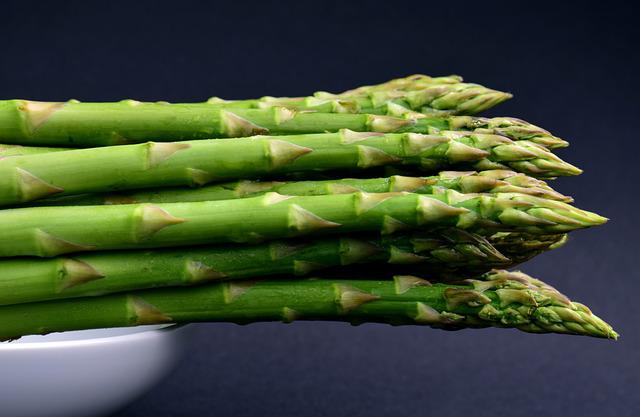
Healthy cooking is more than a trendy trend. You can make your own broths and stocks to control the amount of sodium and fat in your food. It is important to use only local ingredients when possible. And, take an internal temperature reading of your food to ensure it's done. It will be a wise decision. These are just a few other ideas to help you get started. It is easy to cook healthier meals at your home.
Healthy cooking is not a trend
Healthy cooking is a wonderful way to improve your health, and to enhance the quality of your daily life. And unlike a fad, healthy cooking isn't a passing trend. PepsiCo and Campbell Soup aren't following a trend. They are actively making healthier food choices, and expanding their retail distribution.
Making your own broths and stocks gives you complete control over the amount sodium or fat that goes into your meals
It can be delicious and healthy to make your own broths or stocks. Bones add a deep, earthy flavor to the finished product and can be roasted to caramelize the meat. The final stock is enhanced with gelatin and collab from the use of cartilage and bones from veal. Stock can also be used to substitute for vegetable stock in many recipes if you are vegetarian. Bone broth is versatile and can be frozen for use at a later time.
Vegetable stocks are one of the best cooking liquids. Blending vegetables, potatoes, and onion with sweetener or thickening agents creates a versatile cooking liquid. It's great for thick stews or gravies, sauces and Swedish meatballs. Turkey stock uses vegetables and other spices. It's also a good way to make use of leftover pot pie. You don't have to be a fan of chicken stock or beef. There are plenty of options for turkey or chicken stock.

Taking the internal temperature of the food is the most effective way to know when it's done
A food thermometer can be a great tool to use when you cook meat and poultry. The outside of meat and poultry may appear cooked but the interior is not always cooked. You may notice that the juices run clear but the inside isn't, and your meat is not completely cooked. Although it may seem tempting, this is not a good indicator of doneness.
Safe bacteria and fungal infections can be killed by cooking food to the right temperature. It can lead to food poisoning if the food isn't cooked at a safe temperature. A good rule of thumb is that the internal temperature of the food should be hot enough to cause steam to escape. By inserting a thin blade into the meat or poultry, you can check this.
Using local ingredients
Locally-sourced ingredients can be a great way for restaurant owners to get more customers. You can't overcharge for local ingredients but using seasonal ingredients is a great way of keeping costs low. You can also use USDA’s Mixing Bowl for recipes that are based only on what is readily available. Making seasonal menus is possible by using seasonal ingredients.
Locally sourced foods have the advantage of being fresh and high quality. Local farmers can guarantee fresher, more flavorful produce than their farmed counterparts. It's possible to support your local economy by working directly alongside local farmers instead of relying on large corporations. Locally sourced meats and produce will reduce your carbon footprint, and help support local businesses.

FAQ
Can you be a self-taught cook?
Self-taught cooking is possible! It is something everyone enjoys, regardless of their level of cooking ability. If you are interested in learning how to cook, start cooking at home. Start small, like making pancakes for breakfast or spaghetti sauce for dinner. Try new recipes and be open to experimentation when learning how to cook. It's possible that you will make mistakes.
You can learn to cook in a matter of hours or weeks depending on your level of cooking ability. Cooking is more than following recipes. There are many ways of cooking food. So if you have an idea for a recipe, use it.
Where can I find online cooking classes for free?
Many websites offer free cooking classes. YouTube is a great place to search for cooking videos. You can find thousands of recipes on certain websites. You will need to pay a monthly subscription, but you can still try the site for free for 30 day.
How to Become a Chef?
There are many avenues to become a professional chef. Start by enrolling in a class at a vocational school or community college. You can then look into going to culinary school. You can also apply for a paid internship.
What Are the Requirements To Be a Chef?
To be a chef you need a bachelor's level in culinary arts. A series of tests administered to you by the ACF will also be required. A certificate will verify your qualifications once you have met all of these requirements.
What is the difference between a chef & a cook?
A chef prepares food to be served to others. A cook prepares food for himself or herself. While both jobs involve the preparation of food, a chef interacts directly with his customers. They may need to make decisions about what they will serve to their guests based upon their preferences. The cook does not have to interact directly with customers. Instead, the cook ensures that the food tastes great before serving it to customers.
Do I need special equipment to cook?
You don't require any special equipment to learn how to cook. The right tools can make cooking much easier. For example, you could use a knife instead of a fork to eat pasta or a whisk instead of a hand mixer to whip egg whites into stiff peaks. The right tools make cooking easier and faster.
How Long Does It Take to Be a Chef? What is the average career path in this field?
A chef's career takes about five years. You will learn basic cooking techniques, and get experience as a chef assistant. After your training is complete, you will be eligible to apply for a job as a sous chef, executive chef, or line cook. The annual average salary of a chef is $25,000-$60,000.
Statistics
- You'll be amazed that over 90% of CIA students receive scholarships and grants to finish their culinary studies. (ischoolconnect.com)
- The median pay for a chef or head cook is $53,380 per year or $25.66/hour, according to the U.S. Bureau of Labor Statistics (BLS). (learnhowtobecome.org)
- under 10 Kids have been taught that there is special food just for them, and Fiese says that 10 percent of kids will throw a tantrum if they don't get the food they want. (washingtonpost.com)
External Links
How To
How to make a perfect Omelette
Omelets are a favorite breakfast food of mine. But how do you make them perfectly? I have tried many different recipes and methods, but none of them work. So I am sharing some tips and tricks today to help you make fluffy, delicious omelets every morning.
We should first know that eggs are very temperamental ingredients when making omelets. The eggs must be fresh from an organic source and kept at room temperature until they are ready to be cooked. If you don't keep them cold enough, the whites won't form properly, and the yolks will break down too much and become runny. This causes your omelets to look oddly colored. If you want to make omelets right away, it's best not to use eggs that are too cold.
Another tip is to separate the egg before adding it to the pan. You don't want any white to get mixed up with the yolk because this could cause the omelet to curdle.
You might burn the bottom of the egg if you place the egg directly on the stovetop. This could ruin the texture of your omelet. Instead, place the egg in the microwave for 10 second before you put it in the skillet. The microwave heat cooks your egg just right, without it becoming too soft.
Next, let's discuss mixing the eggs. When you mix eggs together, you want to beat them well. You can do this by turning the bowl of your mixer upside down. Next, shake the bowl vigorously. This way, the air inside the bowl gets whipped around and mixes the egg thoroughly.
Now comes the fun part: adding the milk to your mixture. Fold the eggs in the milk mixture by first pouring half of it into the egg whites. Don't worry if there are still streaks of egg visible; these streaks will disappear once you flip the omelet.
After folding the eggs, place the pan on medium heat and wait for the oil to start sizzling. Once the oil has gotten hot, add 1/4 cup of butter and swirl it around so that the entire pan is coated. Now carefully crack open the lid of the pan and sprinkle salt into the pan. A pinch of salt will prevent your omelet from sticking in the pan.
Once the omelet has formed completely, cover the pan and let it set for a few minutes. Flip the omelet by using a spatula. Cook the other side for another minute or two. Take out the omelet and place it in a bowl.
This recipe works best when you use whole milk.